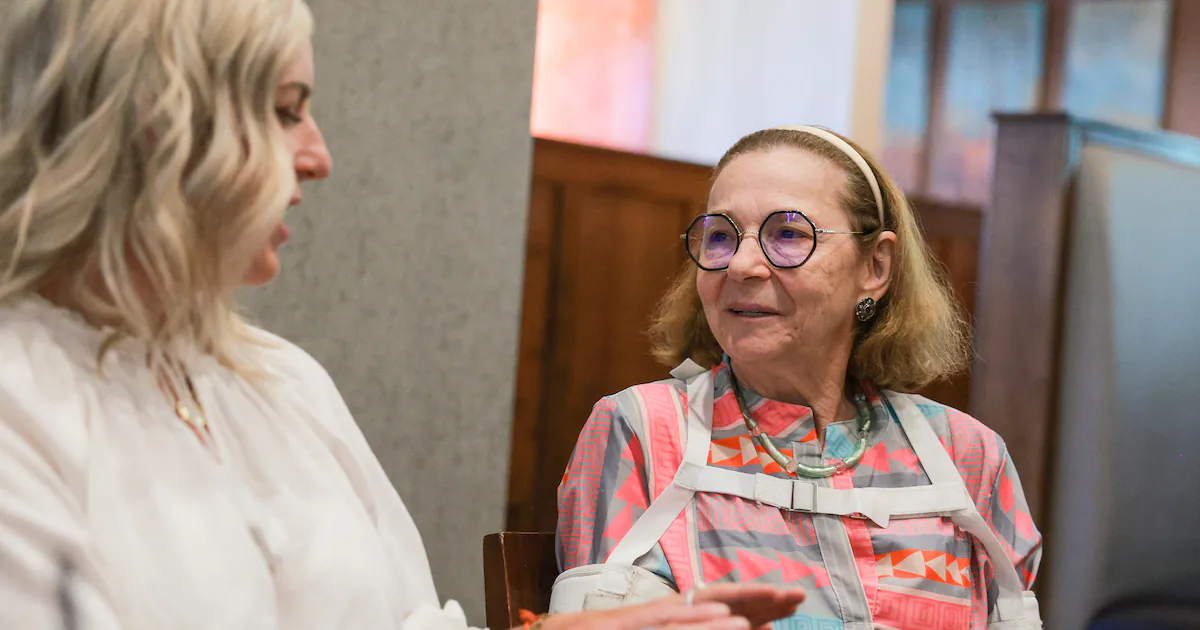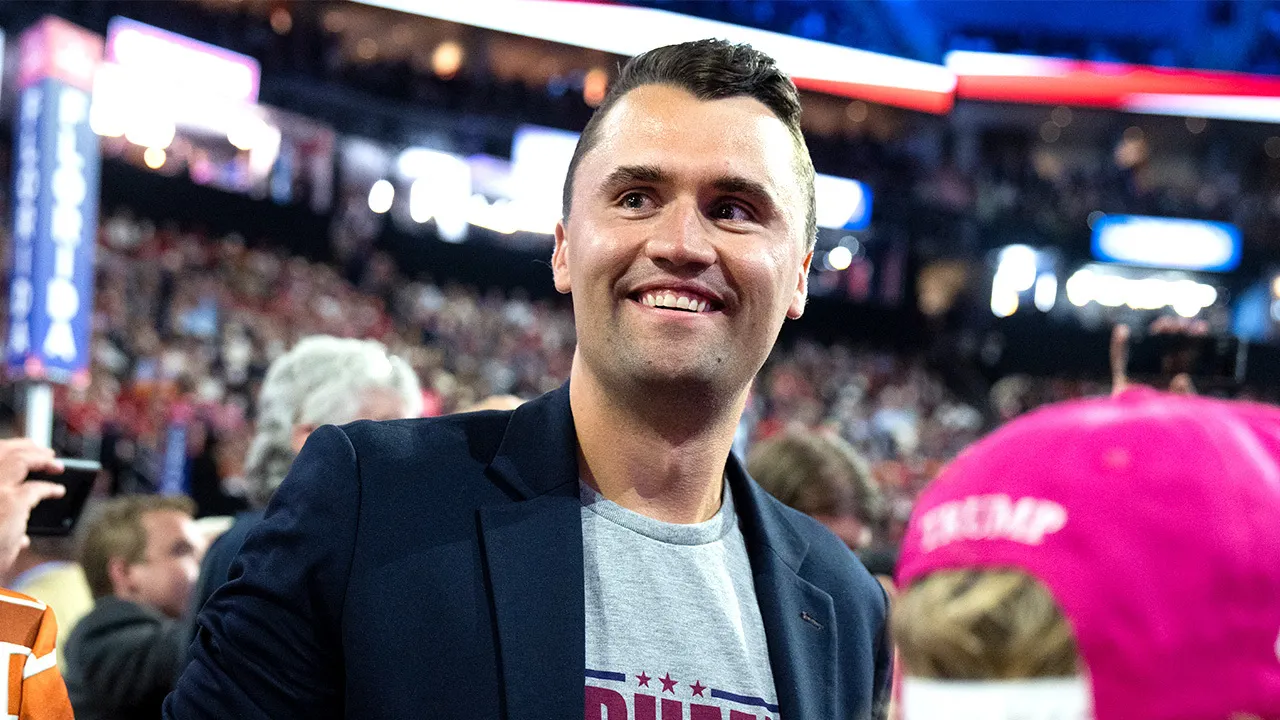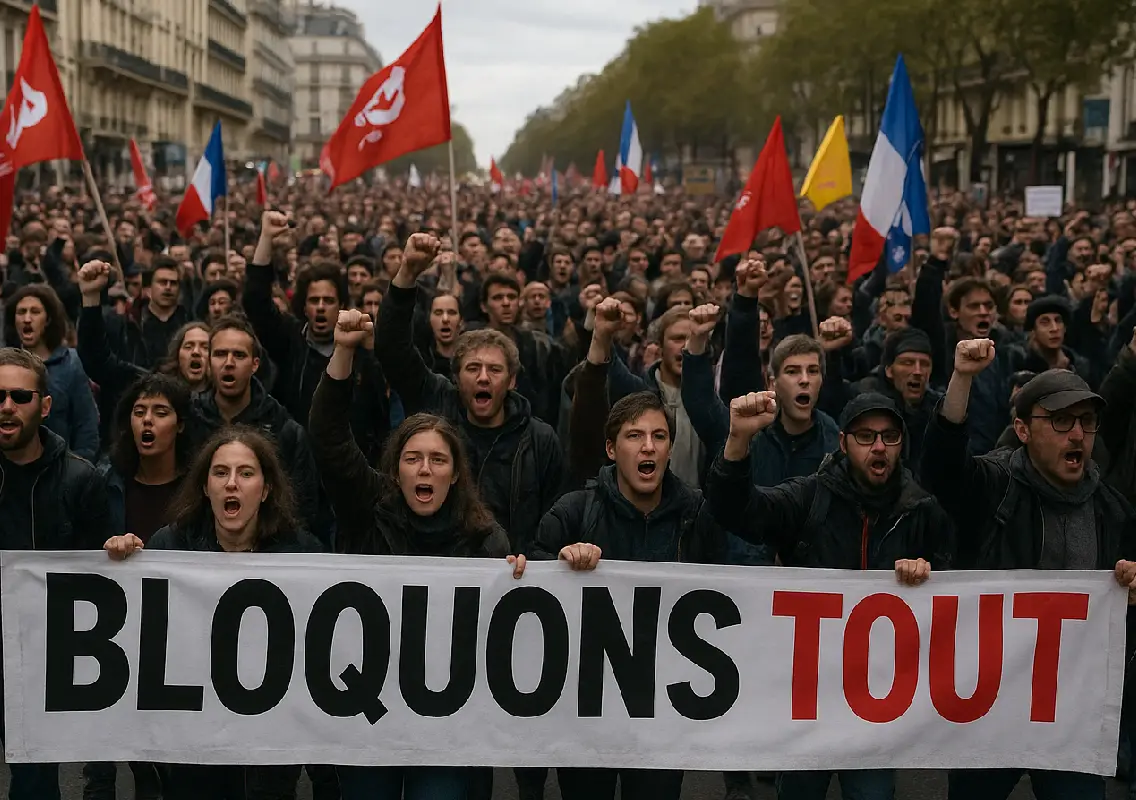Meet ‘Faith Ladies’: How a Jewish, Muslim, Humanist, Catholic, Evangelical and Latter-day Saint found common ground and so much more

On a recent Monday, for nearly two hours, six women — each from a different faith tradition — discussed what prayer looks like in their religion and how they practice it in their own life.
Andrea Tatkon-Coker, who is a Reform Jew, explained that her prayers are usually informal, though Orthodox Judaism prescribes a set schedule. “Do you pray if you’re just driving down the road in your car?” asked Carol Foht, a Catholic who attends St. Thomas Aquinas in Logan, Utah. “Oh, yeah, we have discussions all the time,” Tatkon-Coker replied.
The meeting, held over Zoom, resembled something like a fan club, but instead of star wars, comic books or Taylor Swift, everyone’s passionate obsession was religion. Carole Holland, a member of The Church of Jesus Christ of Latter-day Saints from Smithfield, Utah, asked about a line she’d heard in a Passover prayer on the TV series “The Chosen.”
“It’s actually a song and a prayer,” Tatkon-Coker explained, pulling out a Haggadah, the prayer book used during Passover, and reading aloud.
A discussion of Muslim prayer sparked a cascade of questions that moved beyond the more familiar realm of doctrinal comparisons to the concrete practicalities of daily worship: Did she set an alarm to rise before dawn to say her morning prayer? If she needs to pray at work, is it awkward to tell her employer?
Foht, the Catholic, said she can often recognize a Latter-day Saint by the way they fold their arms during prayer. “I’ve never thought of that!” Holland exclaimed. The group erupted in laughter.
For the past four years, this group of women, who call themselves the “Women of Faith” or more informally the “Ladies of Faith,” have gathered nearly every Monday to talk about their beliefs: the differences, the common ground, and how each woman lives their faith day to day. There are typically seven: a Jew, a Muslim, two Catholics, an Evangelical, a Latter-day Saint, and a spiritual humanist, but not everyone makes it each time.
It started with an intellectual curiosity about each other’s faiths, but over time, their meetings have become less about theology and more about the rhythms of life itself. What began as an effort to understand each other’s traditions has grown into something deeper — a circle of friends who support one another through joy and loss.
The women don’t always agree, and they steer away from politics, but they all share a commitment. “We don’t have to believe as each other believes, but we need to understand why they believe what they do,” Foht.
At a moment when bridging divides in America gains new urgency each week, the “Ladies of Faith” offer an example of pluralism in action: women from different religions and generations who came together out of curiosity about their differences, and over time became friends and even, as they describe themselves, sisters.
The Faith club
The idea took shape in 2020, when Holland, a Latter-day Saint, read the book “What Would a Holy Woman Do?” by Wendy Watson Nelson. Intrigued by the concept, she wanted to make sense of the idea beyond her own tradition. So she invited two Catholic friends to join her in forming the group.
They agreed that each woman would recruit someone from a different faith. Holland brought in Courtney Guymon, who now practices spiritual humanism, a framework centered on human dignity and reason, and with whom she’d served in the Latter-day Saint church.
Through other women’s groups in Utah Valley, other women invited Connin, an Evangelical, and Tatkon-Coker, the Jewish woman.
As one of the few Jews in Cache Valley, Tatkon-Coker welcomed the chance to educate others about her faith. She had grown up in New York City and worked as a professor of nursing and business. She found the women welcoming, nonjudgmental and curious. “If people were willing to listen, I was willing to join,” she said. She’s always felt a little bit an outsider in a predominantly Latter-day Saint area, but when the Muslim woman joined the group, she felt less alone.
The women all live in Utah Valley and they meet weekly on Zoom. Once a month they pick a restaurant and meet in person. The four women in the group are old enough to be mothers to the two younger women in the group, they like to say.
For the group to work, they decided to set ground rules. Together, they read “The Faith Club,” a book about three friends — a Christian, a Jew, and a Muslim — who started a similar interfaith circle. They had agreed on no proselytizing, no trying to prove one religion superior and no politics. “We didn’t want that to be a wedge in our relationship,” said Foht.
Still, their cultural and political differences sometimes linger in the background. Tatkon-Coker has family in Israel and the Muslim woman in the group, who asked not to be named, is a Shia Muslim from Iran. “I don’t see her as the other,” Tatkon-Coker said about the Muslim woman. “I see her as a person who has a different faith than me, that she has a belief in God and who’s having a hard time as an Iranian student in the U.S. so my job is to support her as a friend.”
At first, women appeared more guarded and cautious, Lori Connin recalled, and when disagreements emerged – they worked through them. “Each one of us has an understanding — if there is a hurt feeling, they resolve it and come back to the group and say ‘all is good’ or ‘we need help,’” said Connin, who attends Cache Valley Bible Fellowship Church.
The group’s main guiding principle is mutual respect, regardless of whether they agree or not.
“ We’re not trying to change each other,” said Foht, who moved to Utah from Iowa, where there was a vibrant Catholic community. ” We’re just trying to understand and respect each other.”
She said being with women of other faiths helped her deepen her own beliefs. Over the years, she asked herself: “Why do I believe what I believe?”
‘Closer than sisters’
At times, the gathering I attended turned into a visual demonstration. The Muslim woman shared her screen to show images of the special clothing she wears for Shia prayer. Connin held up two of her prayer journals, where she writes prayers for each of her 12 grandchildren. She said she wanted them to know her faith and to remember that she prayed for them.
For Connin, the group became a lifeline during two of the most tragic events of her life. She lost her older daughter to cancer in August 2021. “The ladies immediately rallied around me,” she said. Her “church family” was also supportive, but the faith ladies were “personally there.” One late night, she got a call from Guymon who told her to step outside. In her yard, the women had placed lights in the shape of a heart. “They were all standing by the road, just saying, ‘We love you,’” Connin recalled.
She would lean on them again two years later, when her youngest daughter died by suicide. Holland was the first to stop by, sitting quietly on Connin’s doorstep in case she needed her. Even then, Connin kept attending the group’s meetings, though often she stayed silent.
“If there is anything I need to share, this is the group I would go to,” she told me. That trust, she believes, comes from sharing their most vulnerable convictions. “We’re talking about intimate, personal beliefs — it draws us closer.” When Holland’s mother died, her first call was to her best friend. Her second was to the women of the group.
For Guymon, who had grown up a Latter-day Saint and now practices spiritual humanism, the group has helped fill a painful void. In her humanist practice, she’s drawn on Native American religions and other traditions to curate her own spirituality. After her mother’s death 15 years ago, the women began to take on something like a matriarchal role in her life.
“What carries us through is that love for each other and the desire to see past the differences and prioritize the relationship,” said Guymon. She also sees the group as a guardrail against rigid and closed-minded thinking.
“It feels super dangerous to isolate your mind into one way of thinking,” she said. “These tiny things that we can do is know each other, trust each other, understand each other — so that there is not that underlying fear that on the grand scale creates big problems.”
Connin told the women she’s written about them in her journals. “What I went through these last years, I only got through with you, ladies,” Connin told the women. Others said they felt the same.
Tatkon-Coker piped up: “We’re closer than sisters.”
Commonalities over differences
As the women compared their prayer traditions, they began to notice unexpected common threads: incense, candles, even stones — ritual elements shared by the Muslim and humanist group members.
They still disagreed on certain things — like how baptism should be done, for example, or the question of the trinity, all while still holding firmly to their individual belief. The group’s conversations dispelled the assumptions — for example Holland thought Catholic prayer was too structured to be personal, but through the Catholic women in the group she learned otherwise. “ I think that’s the greatest thing — I thought everybody’s God was different,” said Holland. “But I think at the heart of it, everybody’s God is the same,” Holland said.
Their willingness to learn from one another extended beyond talk: Foht has attended Holland’s church services, and Holland has sat in on Catholic and Evangelical services.
When I asked Guymon, who is getting a graduate degree and has kids at home, what motivates her to keep attending the group in such a busy stage of life, she said it was the “existential questions and feeling them out.”
“I’m just very curious about the human experience and why people believe the way they do or they think they do,” she said.
As a humanist, and ultimately a non-religious person, she’s often felt like it was helpful to be the one who “doesn’t have a dog in the fight.” She’s often able to introduce a mediating perspective, she said, if there is a disagreement about theological questions or scriptural interpretations.
The women want other women to replicate their group, although they like their size and are not taking on new members. “You have to find the people that you feel you’re going to be comfortable with,” Foht said.
At the close of their meeting, Tatkon-Coker began saying a prayer aloud, asking God for “peace in the world” and to end “famine and discord.” Foht continued, invoking a blessing on the families of the two police officers who had been killed in Tremonton after a shooting.
Holland picked up the prayer, followed by Guymon, who gave thanks for the “beautiful earth” and asked that the women could be “examples of acceptance.” Connin closed by expressing gratitude for living in the United States, and for their group.
One by one, the “amens” trickled in.



